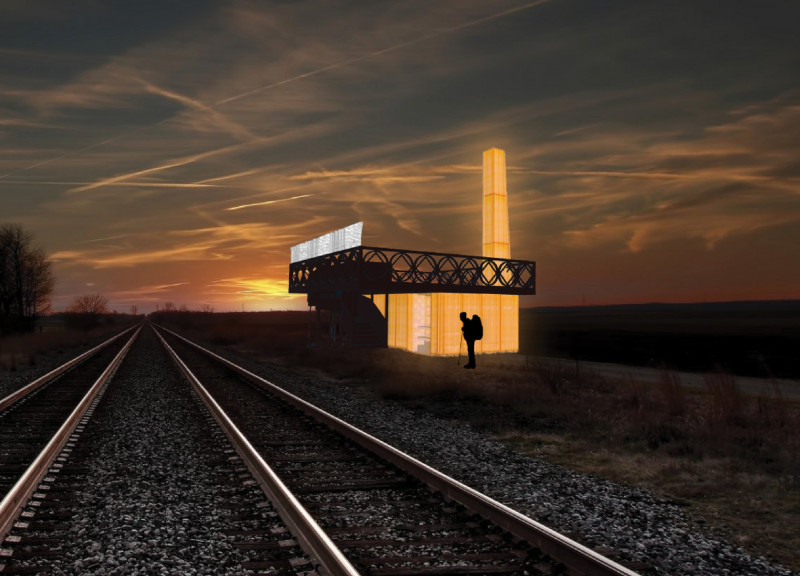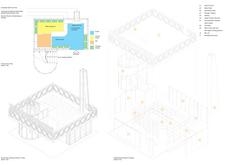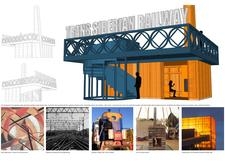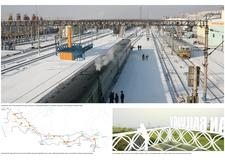5 key facts about this project
### Project Overview
Situated along the Trans-Siberian Railway, this pit stop serves as a vital architectural intervention designed to provide travelers with a space for rest and information. Grounded in the local cultural context and the historical significance of the railway, the design integrates modern materials and construction techniques while maintaining a connection to traditional practices. The project is intended to enhance the travel experience by offering a distinctive landmark and functional retreat for passengers along one of the world's longest railway routes.
### Spatial Strategy and User Experience
The architectural layout features designated public and service areas that ensure efficient movement and accessibility for travelers. Public spaces incorporate inviting seating arrangements, fostering a welcoming atmosphere. A prominent viewing platform allows for panoramic vistas of the surrounding landscape, enriching the travel experience and promoting an engagement with the natural environment. Central to this design is a solid fuel fireplace, which encourages communal gatherings and storytelling, enhancing social interaction among users in a shared space.
### Materiality and Sustainability
The selection of materials reflects both aesthetic and functional considerations. Glulam timber serves as the structural framework, combining strength and visual appeal. Polycarbonate panels enhance the building's translucence, allowing light to play dynamically across the surfaces throughout the day. An insulated panel system contributes to thermal efficiency, addressing the challenges of varied climatic conditions along the railway route. Additionally, the thoughtful integration of a health-oriented seating design around the fireplace promotes comfort and well-being, while the use of a steel frame provides essential structural support, allowing for an open spatial configuration.






















































